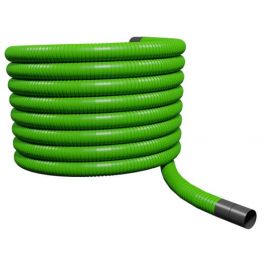comclusive
DIY
- Reaction score
- 10
Hi there,
I have a customer (I'm in IT, not an electrician, and am just getting information at this stage before appointing a contractor early next year) who is planning on having fibre and a switch in a couple of fields for events. We will be providing an IP65 cabinet with mains power, a fibre patch panel and a single 48 port network switch. The power requirement is just for one switch and the fans in the cabinet, and will only be powered for the duration of event prep, during the event and on take-down.
We'll be using a cabinet with 19 inch rails for the fibre patch and switch, and a separate locked section for the mains ingress, which event organisers would not have access to. The switch socket will be in this locked section.
The runs will be in a trench and could be as long as 600m. The source is a large (huge) house with a big distribution board.
My question is, for a low power requirement, but with the length of run, what size cable would be best, and do we need to consider inspection points and/or joints? There will be up to 4 of these trenches to different areas of the site, but they may only use one at a time depending on the size of the event.
Also, is it bad to go direct from point A to point B if it involves crossing a field which may have LGVs crossing for event setup and take-down, should the trench go around the perimeter?
Thanks very much
Mike
I have a customer (I'm in IT, not an electrician, and am just getting information at this stage before appointing a contractor early next year) who is planning on having fibre and a switch in a couple of fields for events. We will be providing an IP65 cabinet with mains power, a fibre patch panel and a single 48 port network switch. The power requirement is just for one switch and the fans in the cabinet, and will only be powered for the duration of event prep, during the event and on take-down.
We'll be using a cabinet with 19 inch rails for the fibre patch and switch, and a separate locked section for the mains ingress, which event organisers would not have access to. The switch socket will be in this locked section.
The runs will be in a trench and could be as long as 600m. The source is a large (huge) house with a big distribution board.
My question is, for a low power requirement, but with the length of run, what size cable would be best, and do we need to consider inspection points and/or joints? There will be up to 4 of these trenches to different areas of the site, but they may only use one at a time depending on the size of the event.
Also, is it bad to go direct from point A to point B if it involves crossing a field which may have LGVs crossing for event setup and take-down, should the trench go around the perimeter?
Thanks very much
Mike










